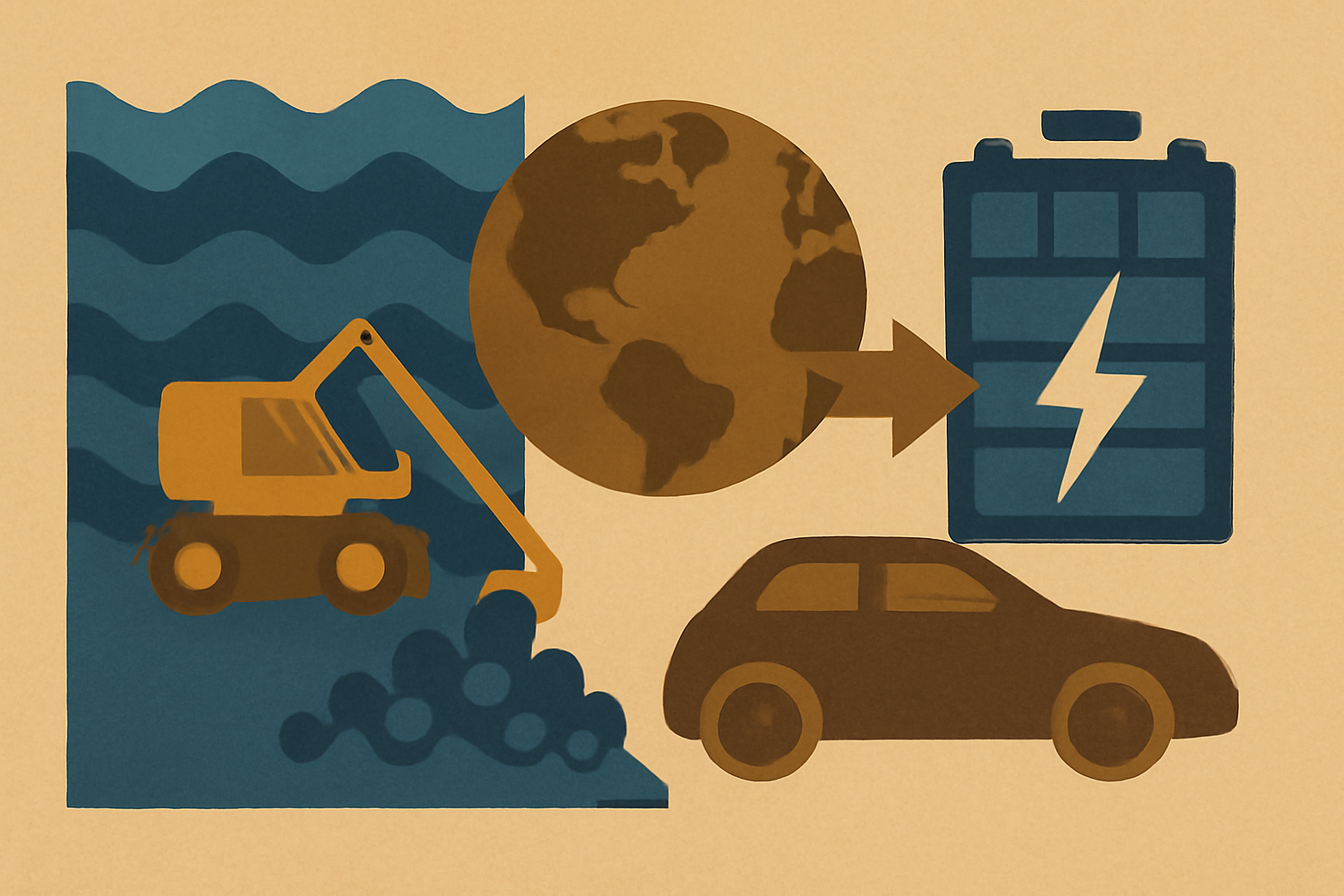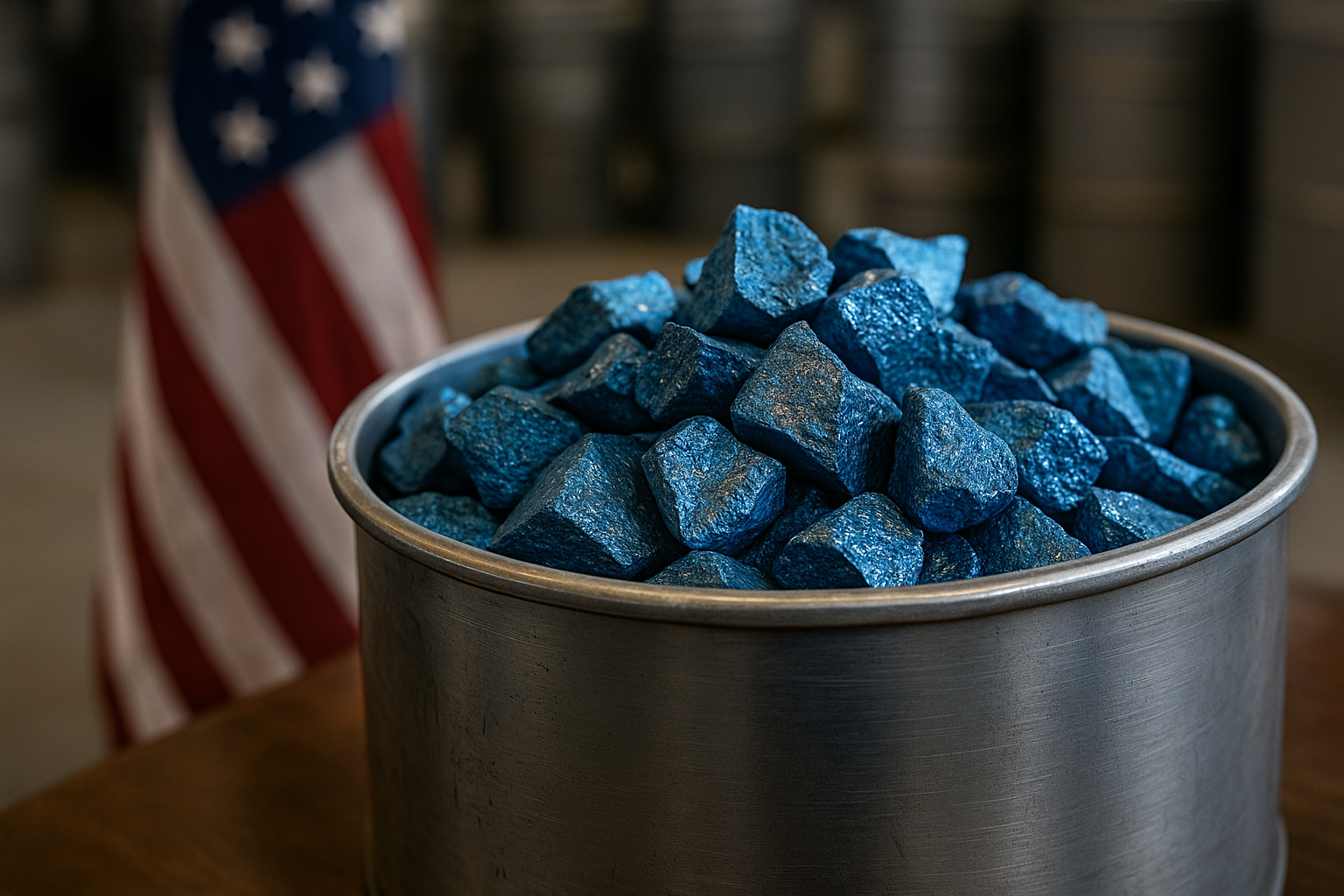As EV Demand Soars and Land-Based Reserves Tighten, Investors Turn Eyes to the Ocean Floor
In a sign that the global race for critical minerals is entering uncharted territory, governments and companies are making bold moves into deep‑sea mining—a once-theoretical frontier that’s fast becoming a tangible solution to looming supply shortages.
Over the past week, headlines emerged from three continents. The International Seabed Authority (ISA) issued new exploration licenses, Norway granted approvals to commercialize parts of its extended continental shelf, and U.S. policymakers introduced legislation fast-tracking permits for deep-ocean mineral extraction. These developments aren’t coincidental—they reflect a coordinated pivot toward tapping the vast, largely untouched reserves of copper, cobalt, nickel, and rare earths lying miles beneath the sea.
With demand for these metals skyrocketing—driven by electric vehicles (EVs), energy storage, and advanced computing—investors are watching closely as ocean mining transitions from speculative to strategic.
Why This Matters for Investors
The global energy transition is metal-intensive. According to the International Energy Agency (IEA), EVs require 6x more mineral input than conventional cars, while wind and solar infrastructure needs several times more copper and rare earths than fossil-fuel alternatives. Yet the world’s terrestrial mining operations are struggling to keep up.
The World Bank estimates global copper demand could double by 2035, and McKinsey’s 2024 clean-energy forecast warned that “shortages in battery-grade nickel and cobalt could constrain net-zero pathways without alternative sourcing.”
Deep-sea mining offers exactly that.
Seafloor polymetallic nodules—rocky formations found 4,000 to 6,000 meters deep—are rich in copper, manganese, nickel, and cobalt. According to Global Sea Mineral Resources, a single square kilometer of the Clarion-Clipperton Zone (CCZ) in the Pacific Ocean may contain more cobalt than all known land-based reserves.
The ISA has already issued 30+ exploration licenses to companies like The Metals Company (NASDAQ: TMC) and GSR, backed by Belgium’s DEME Group. Norway’s newly approved deep-sea mining corridor could hold over 45 million tonnes of metal-rich deposits, and U.S.-based Ocean Minerals LLC has applied for exploratory permits near Hawaii.
“The geology of the ocean floor offers a rare convergence of scale, grade, and accessibility—all three needed to meet tomorrow’s demand,” said Dr. David Hammond, a marine geologist and advisor to ISA, in an interview with Financial Times.
Core Analysis: Risk, Regulation, and Opportunity
Despite the growing momentum, deep-sea mining isn’t without controversy—or risk. Environmental groups warn of unknown consequences to fragile ocean ecosystems. While companies argue that ocean mining has a smaller physical footprint than terrestrial strip mining, critics emphasize the lack of long-term impact studies.
The investment case therefore hinges on regulatory frameworks and technological execution. The ISA is set to finalize its Mining Code—the global legal standard for ocean-floor extraction—by late 2025. Meanwhile, countries like Norway and the U.S. are moving ahead with domestic rules that may fast-track early adoption.
From an infrastructure standpoint, deep-sea mining requires highly specialized equipment: remotely operated vehicles (ROVs), subsea lift systems, slurry transport tech, and shipboard processing platforms. This opens opportunity not just in mining operators, but also in marine engineering, robotics, and data monitoring systems.
“It’s not just a mining story—it’s a tech story,” said Karen Tang, commodities strategist at JPMorgan, on Bloomberg TV. “Investors should watch for exposure beyond the drill bit—AI-based seabed mapping, underwater robotics, and ESG-compliant monitoring are key alpha sources.”
Future Trends to Watch
- Finalization of ISA Mining Code (Q4 2025): This will unlock commercial activity across the CCZ.
- Subsea Technology Partnerships: Look for collaborations between mining firms and tech/robotics providers (e.g., Saab, Oceaneering, Fugro).
- Green Funding Pressure: ESG funds may support operators with low-carbon extraction methods and biodiversity safeguards.
- Defense and National Security Investment: As critical metals become geopolitically strategic, nations may fund or acquire stakes in marine mining startups.
- SPACs and Public Listings: Expect new marine extraction firms to go public or pursue reverse mergers as investor interest peaks.
Key Investment Insight
Investors should consider early-stage exposure to companies operating in or supplying the marine mining ecosystem. These include:
- Public companies like The Metals Company (TMC)
- Marine robotics and data firms such as Fugro (AMS: FUR) and Oceaneering International (NYSE: OII)
- ETF exposure via critical minerals ETFs (e.g., LIT, PICK) or thematic funds tracking future energy infrastructure
- Private equity and venture capital arms of major mining or industrial firms, many of whom are already funding subsea tech innovation
Risk management remains critical—regulatory frameworks are evolving, and ESG compliance will play a defining role in which companies gain traction.
Stay ahead of the curve with MoneyNews.Today—your trusted source for fast-moving investor insights across energy, tech, and geopolitics.





